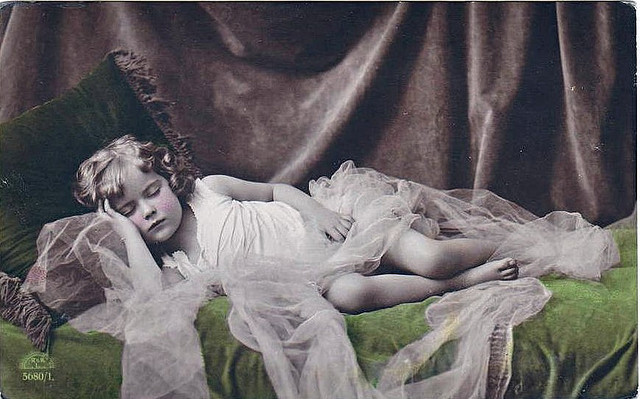
When we heal our inner child we are able to process suppressed and unresolved emotions and change old patterns of behavior that have been causing us difficulties and hindering us.
Often, we may not realize that when we are emotionally triggered it is due to things that have happened many years ago. It isn’t until we route back to where an original emotion stems from that we discover that we regularly react and respond in ways that directly result from our childhood and actually have very little to do with the present moment.
Connecting to our inner child allows us to undo some of the wrongly held beliefs that stem from our past and also to let go of old emotional pain.
Initially it can be overwhelming to connect with our inner child, as we are delving into history that we have previously tried to deny. Especially if we have been through a lot and there is a lot of distress to sift through.
Many of the emotions that we feel today exist due to past experiences and may be cause for us feeling low self-worth or low self-esteem. Although, much of what we feel is an illusion. Sometimes we are taught and conditioned to believe so much about ourselves that really isn’t true and a lot of it stems back to our vulnerable and absorbent days from childhood.
When we are children our minds aren’t always rational and instead of filtering information and absorbing what is healthy and rejecting what is harmful, we take everything in. If someone behaves in a way that is hurtful, we internalize it and take on how they have acted so that we ultimately feel responsible for their treatment.
We can then be left feeling worthless, fearful, neglected and misunderstood without knowing why we feel this way or knowing how to express these emotions. We don’t always recognize that how we are feeling now is associated with what has taken place in the past. Our formative years have a huge influence on who we grow up to become as we move into teenage years and adulthood. At any time we are able to consciously rewind through the years so that we can correct any false beliefs we hold and also so that we can put our experiences and emotions into context.
When we reconnect with our inner child for the first time, we have to be prepared for all the suppressed emotions to rise to the surface, and often we will experience them as though they are happening in current time, rather than belonging to the past. This is okay. Sometimes we have to cry and cleanse to allow these emotions to work their way through.
Connecting to our inner child is easier if we take ourselves back to somewhere that feels like a safe haven, whether that is an actual place, or a memory we visualize in our minds. We may feel secure at a grandparent’s house or a friend’s, or being surrounded by our favorite belongings. We can pour ourselves our favorite childhood drink, or prepare some food beforehand that reminds us of a particularly happy stage of our childhood. Some people prefer to have a comforting teddy nearby or something to hold on to that evokes positive memories and emanates a good vibration. Whatever we choose, we should try to recreate a safe and secure scene as best we can, whenever we resurrect past feelings.
Rather than going back to a childlike state, we need to keep our rational, but compassionate, mind in tact. We basically need to be the adult who is tending to the child. Now that we have learned so much about life, we are in a position where the knowledge and understanding of the world and the people within it, can help us to make sense of all the situations we were put through as a child.
During childhood we do not properly understand emotions and feelings, so when they arise in us, or are expressed by other people, they can be confusing and bewildering. Rather than processing them we push them down and mask them, where they remain until we feel ready to acknowledge them.
We, therefore, must be patient and not expect that we are going to be able to heal all of our past wounds in one go. It has taken us a long time to learn everything that we hold inside, so it is going to take us some time to let go of it all and relearn more rational information.
Depending on how painful our past experiences have been, we may want to go within and connect with our inner child in small sessions that take place for only 5-10 minutes at a time, or whatever feels comfortable, so that we do not become overcome with emotion.
When we are dealing with our inner child we must remember that we are talking to a child, so rather than berate and get angry, we should create a safe space so that the communication will be light and easy and also ensure we listen carefully and pay full attention. If our inner child is frightened that we are going to be condemning the emotions that he or she has held on to, or if they feel we are not fully interested, they will not communicate freely whatever it is that is causing the anguish or pain.
As emotions emerge we must remember to pacify and soothe our inner child by being accepting and showing supportive, loving care without expressing any judgment or shame. Every feeling that arises is valid, so we should respect and trust what comes to the surface rather than being afraid and pushing it back down. It is essential that our inner child trusts us to be able to handle whatever he/she shows us, even if some of it appears to be dramatic, irrational or unreasonable. Our inner child will have felt things very differently towards things that happened years ago, compared to how we would feel if they happened now.
We may find that some of the people who are connected to painful past emotions are still in our lives today. Part of the process of healing our inner child is letting go of any anger or resentment. We can do this by forgiving whoever it was that caused us harm. Holding on to negative emotions does not justify the pain or help us in any way. Letting go of all anger is the only option if we want to move on.
Although we should not be judgmental, it is okay to feel and express all the emotions that are associated to painful childhood memories. We may feel angry, we might want to scream or shout and feel enraged and furious at how we were previously treated. The only way for emotions to go away is by going through them. So that our emotions can process effectively they must be expressed and sometimes we need to verbally express them; when we use our voice far more energy is added to the emotion. However, it is vital that we do this when we are in a safe space. It is not going to be beneficial to shout or scream at anyone else; all this will do is add more negativity and we will go around in cycles repeating the same old emotions.
When we are purging emotions we should also be aware that we may feel a sense of associated anger or sadness. Certain things that happen to us aren’t always fair or right and we may also feel sorrow or deep seated grief. There is no right or wrong to whatever our inner child feels. We must remember that this is our childhood mind and is very different to the adult mind we know today.
We can connect to our inner child as often or as little as we want. We can incorporate the communication into our meditations, or even just carry the spirit of our inner child with us so that we can channel it into our daily life.
We have a great deal to learn from our inner child and by getting to know him/her we can achieve a profound awareness of our true sense of self. This connection is the clue that helps us locate the majority of our “missing pieces.” We have grown up with our inner child, yet many of us disconnect from our memories rather than sticking together so we are stronger and bonded as one.
There are billions of fragments of information held within our childhood memories. Some are painful, while others hold a wealth of knowledge. All of them help us to heal and understand ourselves on a unique and intimate level, as our inner child is the one person who has been with us every step of the way.
Relephant Favorite:
A Simple Guide to Healing a Broken Heart.
.
Author: Alex Myles
Editor: Travis May
Photo: Flickr/Cheryl Hicks








Read 0 comments and reply